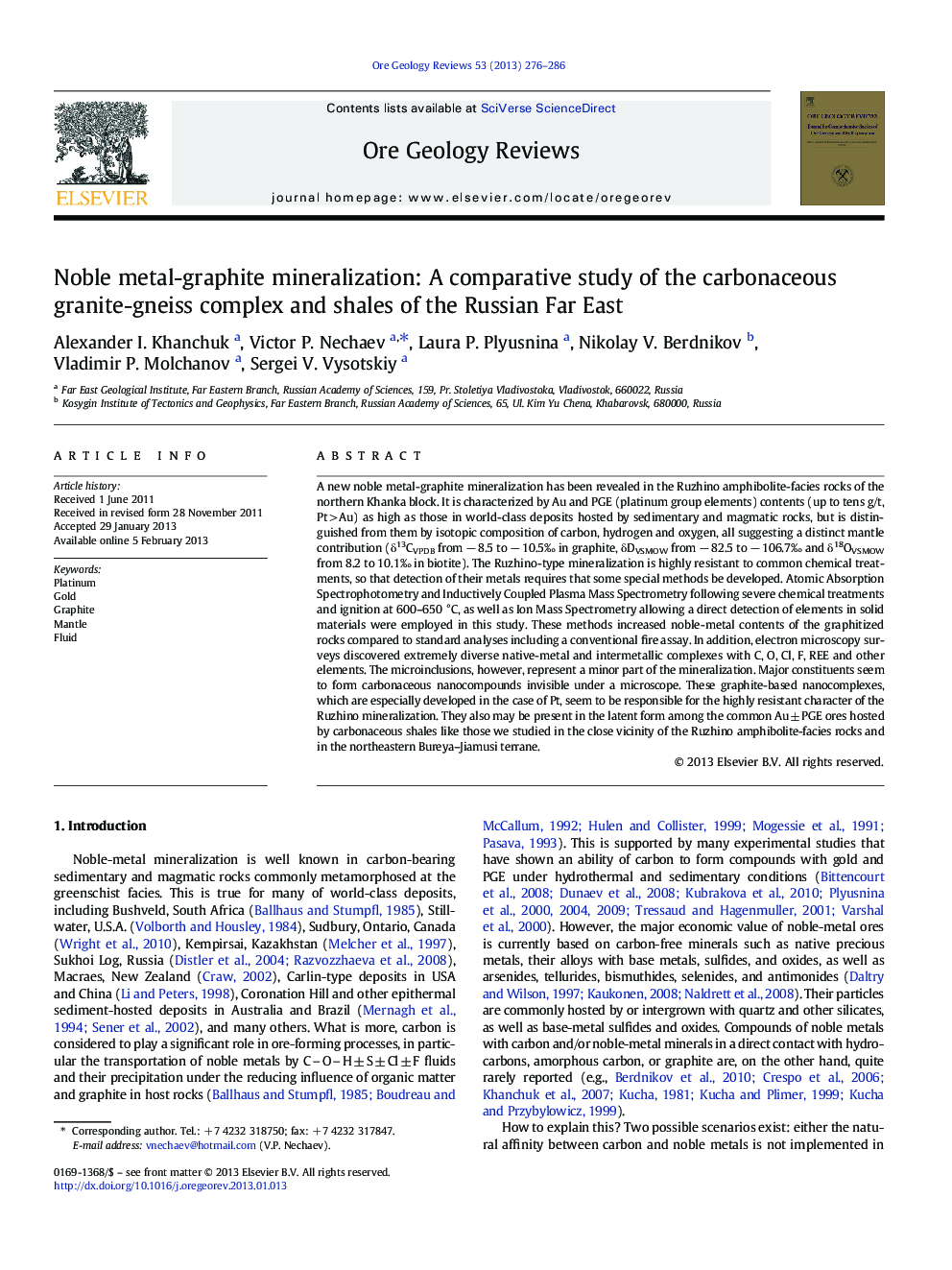| Article ID | Journal | Published Year | Pages | File Type |
|---|---|---|---|---|
| 4697550 | Ore Geology Reviews | 2013 | 11 Pages |
A new noble metal-graphite mineralization has been revealed in the Ruzhino amphibolite-facies rocks of the northern Khanka block. It is characterized by Au and PGE (platinum group elements) contents (up to tens g/t, Pt > Au) as high as those in world-class deposits hosted by sedimentary and magmatic rocks, but is distinguished from them by isotopic composition of carbon, hydrogen and oxygen, all suggesting a distinct mantle contribution (δ13СVPDB from − 8.5 to − 10.5‰ in graphite, δDVSMOW from − 82.5 to − 106.7‰ and δ18OVSMOW from 8.2 to 10.1‰ in biotite). The Ruzhino-type mineralization is highly resistant to common chemical treatments, so that detection of their metals requires that some special methods be developed. Atomic Absorption Spectrophotometry and Inductively Coupled Plasma Mass Spectrometry following severe chemical treatments and ignition at 600–650 °C, as well as Ion Mass Spectrometry allowing a direct detection of elements in solid materials were employed in this study. These methods increased noble-metal contents of the graphitized rocks compared to standard analyses including a conventional fire assay. In addition, electron microscopy surveys discovered extremely diverse native-metal and intermetallic complexes with C, O, Cl, F, REE and other elements. The microinclusions, however, represent a minor part of the mineralization. Major constituents seem to form carbonaceous nanocompounds invisible under a microscope. These graphite-based nanocomplexes, which are especially developed in the case of Pt, seem to be responsible for the highly resistant character of the Ruzhino mineralization. They also may be present in the latent form among the common Au ± PGE ores hosted by carbonaceous shales like those we studied in the close vicinity of the Ruzhino amphibolite-facies rocks and in the northeastern Bureya–Jiamusi terrane.
► A separate Au-PGE-C mineralization occurs in the graphitized granite-gneiss complex. ► Strong PtC nanocompounds make the ore highly resistant to chemical treatment. ► It differs from that in black shales by Pt > Au and mantle-derived δ13C, δD, and δ18O ► A mantle fluid flow might deposit PGE + Au and graphite in its way upward. ► The sediment-hosted ores may include some graphite-related PGE.
